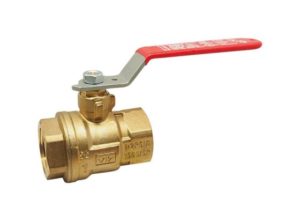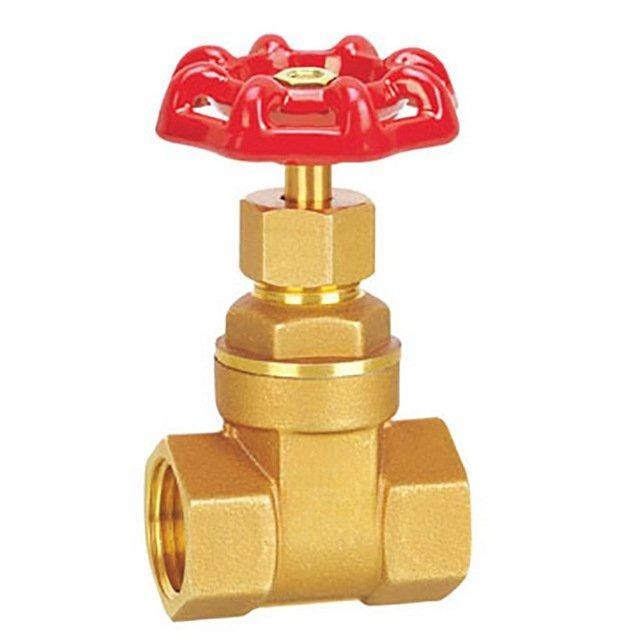Everything You Need to Know About Ball Valves
Ball valves are a type of shut-off valve designed to control the flow of a gas or liquid through the use of a pivoting ball that has a port through its center. When the ball is rotated 90°, the medium is either blocked or allowed to flow through, depending on the orientation of the port. Ball valves come in a wide range of styles, materials, and sizes to meet the particular needs of various applications.
DN 8-100MM BRASS GATE VALVE
What Are Ball Valves?
Ball valves are installed throughout piping systems to allow, obstruct, and control the flow of various vapors, gases and liquids. The ball is mounted against two seats and is connected with a shaft to the control mechanism used to rotate the ball. When the port opening is perpendicular to the flow, the fluid is not allowed to pass through the valve. By rotating the port to the open position, fluid is allowed to pass through at a controlled rate.
Design
One key design element of ball valves is their construction material. Ball valves can be constructed from a wide range of materials, such as metals, plastics, or metal fused with ceramic. The ball itself is often plated with chrome for added durability. The ideal ball valve material depends on factors such as operating temperature, pressure, and the type of fluid that will move through it.
Another design aspect of ball valves is their port profile. The hole through the ball can have different profiles such as V-shaped, reduced port or full port:
- V-Shaped. A V-shaped or characterized profile allows for more precise control of flow rate by rotating the ball. The profile can be optimized to achieve linear flow characteristics.
- Reduced port. This is the most common type of bore profile. Reduced bore ball valves can introduce friction losses into a system; however, these losses are relatively small compared to other valve types.
- Full port. These ports have the same diameter as the pipe, meaning they are easier to clean and there are no extra friction losses. However, full port valves often cost more and are bigger than standard ball valves.
Function
Similar to other valves that use a rotating disc to control the movement of fluid throughout a system, ball valves use a ball to control the fluid. By moving the actuator, the ball rotates to a point where the port aligns with the valve body outlet and inlet, allowing the fluid to flow through the valve.
The valve needs a one-quarter turn of a handwheel to move from fully open to fully closed. This small degree of movement allows operators to quickly open and close the valve in the event of an emergency. By closing the valve, operators can easily isolate a section of piping for repairs, installation, or inspection.
Applications
Because of minimal flow restrictions, ball valves cause a low-pressure drop compared to other valve types, which prevents valve damage. Since ball valves only require a one-quarter turn to fully open or shut off, they offer a great way to immediately allow or restrict fluid flow. This advantage makes ball valves a popular option for a wide range of residential and specialized applications, including:
- Outdoor hoses, plumbing, washing machines, and other residential applications
- Oil and gas refining and processing applications
- Automotive production applications
- Power processing
Ball Valve Parts
Valve Housing or Body
This exterior shell houses the other valve components. It’s often constructed from a rigid metal that can provide adequate protection to the internal components.
Ball
The spherical ball features a hole in the center, known as a port. The port serves as an opening to either allow or block the flow of fluid, depending on its position. When the cross-section of the port aligns with the fluid path, fluid is allowed to flow through. This is crucial in preventing throttling.
Seat
The seat seals the gap between the ball and the body of the valve.
Stem
The stem connects to the actuator or handle that rotates the ball. It has o-rings or other seals in place so fluid can’t leak between the shaft, stem, or bonnet.
Bonnet
This is part of the valve housing. It contains and protects the shaft and its packing.
-
The Key to Fluid Control: Exploring the Advantages of Ball Valves in Industrial SystemsNewsJul.09,2025
-
The Versatile World of 1, 2, and 3 Piece Ball ValvesNewsJul.09,2025
-
Stainless Steel Ball Valves: The Ideal Choice for Efficient Flow ControlNewsJul.09,2025
-
Optimizing Fluid Control with Ball Float ValvesNewsJul.09,2025
-
Manual Gate Valves: Essential for Control and EfficiencyNewsJul.09,2025
-
Everything You Need to Know About Butterfly ValvesNewsJul.09,2025
-
The Versatility of Wafer Type Butterfly ValvesNewsJul.08,2025





